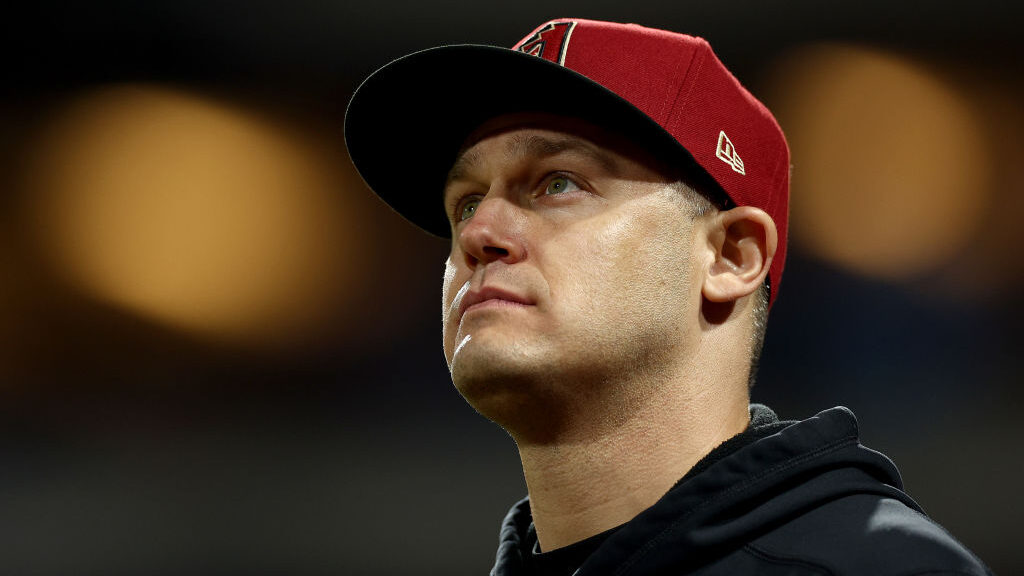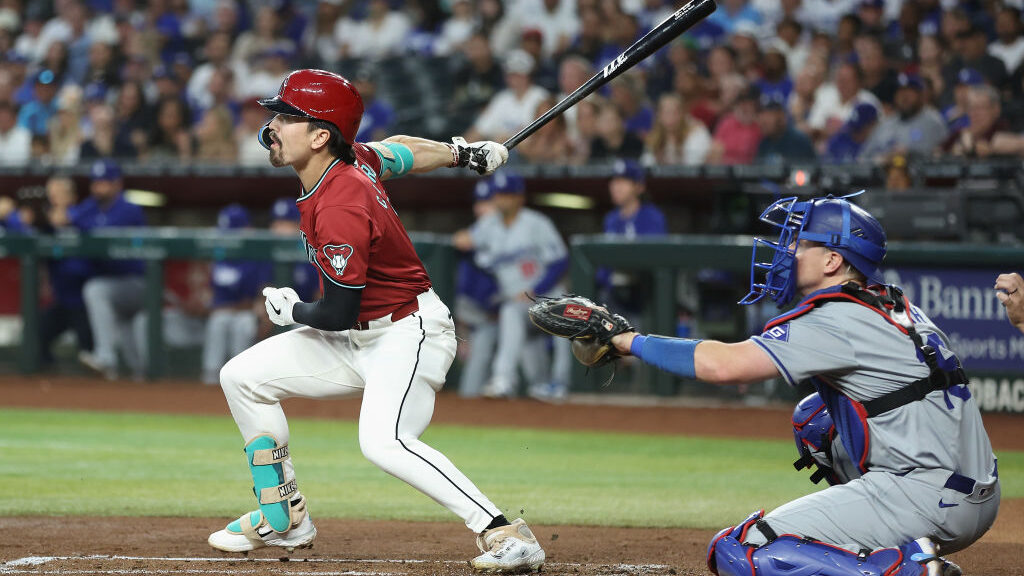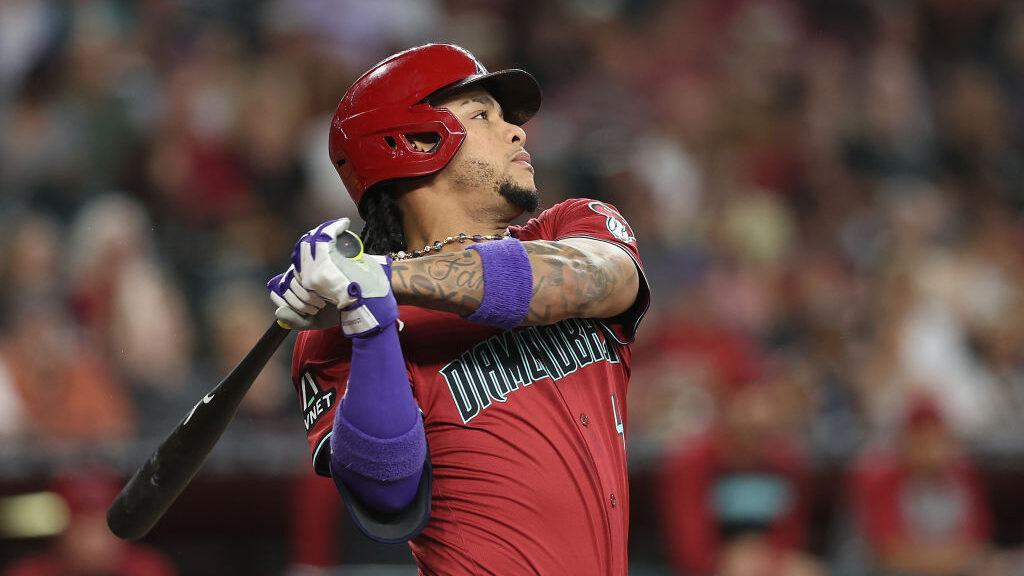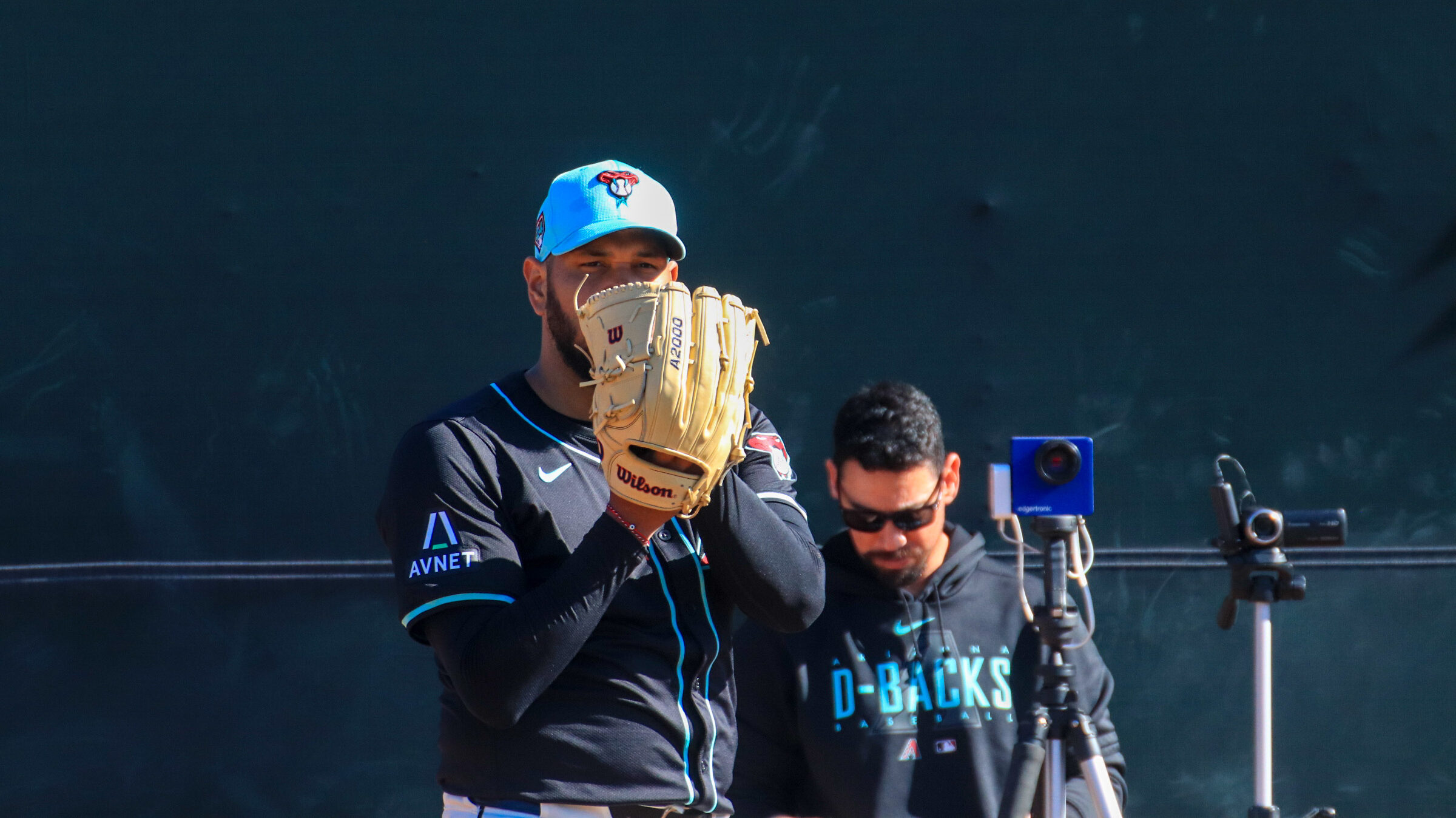Absolute power: Strikeout trend continues as homers become priority
Jul 20, 2018, 1:46 PM | Updated: 5:15 pm
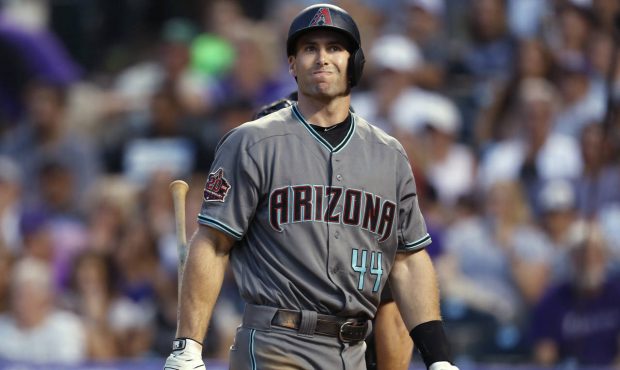
Arizona Diamondbacks' Paul Goldschmidt reacts after striking out against Colorado Rockies starting pitcher Tyler Anderson to end the top of the fifth inning of a baseball game Tuesday, July 10, 2018, in Denver. (AP Photo/David Zalubowski)
(AP Photo/David Zalubowski)
PHOENIX — The all-time record for strikeouts in a single season has been broken every year for the past decade. Major League Baseball is on pace to break that mark once again.
Last year, MLB teams combined to whiff a record 40,104 times, continuing a yearly trend of steady record-breaking that dates back to 2008. At the 2018 All-Star break, baseball is on pace for 41,320 strikeouts, which would eclipse the all-time record in a season from a year ago by more than 1,000 K’s.
The Arizona Diamondbacks are also conforming to the strikeout trend. This year’s team is on pace to notch the second-most strikeouts in franchise history — behind only the 2010 team featuring Mark Reynolds, the third baseman who struck out 211 times that season alone.
“Hitters are not scared to strike out because it’s just a common thing now,” said Danny Coulombe, a relief pitcher in the Oakland Athletics organization who played for Scottsdale’s Chaparral High School.
A number of factors are contributing to the K parade. The advent of emphasis on launch angle and exit velocity has hitters changing their approach in an effort to hit more fly balls, resulting in more home runs. Essentially, they’re sacrificing contact for power.
In many cases, this strategy extends to two-strike counts. In years past, players might have choked up on the bat, sacrificing power to defend the plate and hit for more contact to put the ball in play.
That’s not often the case anymore.
The percentage of two-strike plate appearances that ended with a ball in play was 52 percent in 2013, according to data provided by Mark Simon of Baseball Info Solutions. That number has steadily declined each season since and now sits at 48.9 percent.
“At this point hitters are willing to strike out because the strikeout has no longer been perceived by people as an ‘oh no’ kind of thing,” Simon said. “Now it’s not a big deal for a hitter to swing and miss.”
Ben Lindbergh, a staff writer for The Ringer and a member of the Society for American Baseball Research who has written about the strikeout trend, said that barring certain situations where a strikeout is obviously detrimental — such as needing a sacrifice fly or the necessity to put the ball in play with multiple runners in scoring position — it’s not a huge negative.
“On the whole, a strikeout really isn’t any worse than any other kind of out,” Lindbergh said. “Now that teams realize that, and players increasingly realize that, there’s less of a stigma surrounding strikeouts than there used to be.”
The most recent trend of increased strikeouts seems to be driven, at least in part, by a mindset shift in the batter’s box. Swinging for the fences with two strikes is becoming a more preferred approach compared to, say, poking a weak grounder merely to make contact that often results in an out anyway. As a result, the league is seeing more all-or-nothing hitters like Joey Gallo of the Texas Rangers. He’s hitting a lowly .187 with a league-leading 132 strikeouts, but he has also launched 22 home runs.
Diamondbacks All-Star first baseman Paul Goldschmidt has already struck out 110 times in 95 games. At that pace, he’d fan 179 times in 155 games played (the amount of games he notched a season ago). That would be a career-worst by more than 20 strikeouts.
David Peralta, who is putting together his best offensive season by OPS since 2015, has struck out 81 times in 88 games. If you extrapolate that K total to the 140-game plateau he reached last season, he’d also set a career-high with 128 strikeouts.
Still, those are two of the Diamondbacks’ most accomplished hitters. They’ve been the team’s top two position players in terms of wins above replacement at the break, according to FanGraphs, despite pacing toward their highest single-season strikeout totals. Their strikeout rates have not hindered their collective ability to impact the game in a positive way, further backing the argument that strikeouts are no longer viewed with such a negative connotation.
In the past, season-to-season strikeout trends were snapped by a year with fewer Ks. The overall trend of increased strikeouts, however, goes back to the very beginning of the sport in the late 1800s.
While there have been seasons with decreased numbers of whiffs along the way, the general trend line has been on the rise for more than a century.
“We’re at the point now where this has been going on long enough and the factors behind it are understood well enough that I think we can say if left unchecked this is going to continue,” Lindbergh said.
Instead of reaching a saturation point where the number of strikeouts plateaus, the quantity of Ks continues to rise steadily. If MLB views this as an issue it wants to address, there are a couple of viable options that could slow down the trend.
“I think that things will change maybe at least a little bit for the better when they lower the mound,” Simon said. “That would probably be step one.”
In the 1960s, pitching dominated the sport. Hall of Famer Bob Gibson notched a sparkling 1.12 ERA in 1968 with 13 complete game shutouts. Following that season, MLB decided to lower the pitcher’s mound from 15 inches to 10 inches and shrink the strike zone in an effort to stimulate offensive production.
The move worked, as offenses went from scoring 3.42 runs per game in 1968 to an average of 4.07 the following year, according to Baseball Reference.
The circumstances now are different, as offenses are not exactly struggling to produce runs as they strike out with impunity. Still, lowering the mound once again may lower strikeout rates and tip the scales slightly more in favor of hitters to create a more balanced on-field product.
Of course, that’s if the strikeout rates are deemed a problem worth fixing. Earlier this week, commissioner Rob Manfred said the league intends to “be bold” in addressing various trends shaping the sport, including strikeouts, according to the Washington Post’s Dave Sheinin.
On the path to 11 consecutive seasons of rising strikeout tides, fans have to wonder if rule changes are on the not-so-distant horizon.

